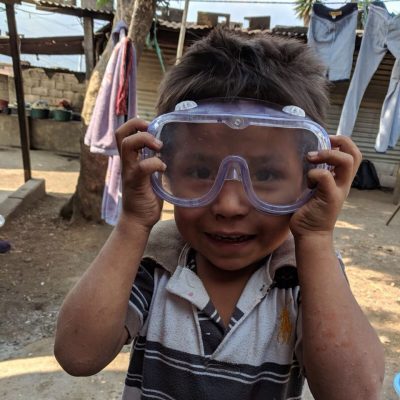Article
During Senior Fellow Mia Ozegovic’s first year as a high school teacher with Teach for America, she noticed that many of her senior students were uninformed or misinformed about the college application process. Due to the school’s limited staff and funding, the students did not have access to many of the college preparatory resources enjoyed by their peers attending schools in more affluent neighborhoods. Mia’s students often missed important scholarship deadlines, were unsure of how to fill out federal financial aid forms, and did not spend time preparing for standardized college entrance exams.
After being asked to write countless recommendations and edit a great number of essays just days before applications were due, Mia realized that the situation was dire and her students needed more assistance than she was able to provide on her own.
Mia approached other teachers at her school to discuss how they could address the educational opportunity gap between high-income and low-income youth.
Due to the school’s limited staff and funding, the students did not have access to many of the college preparatory resources enjoyed by their peers attending schools in more affluent neighborhoods.
After identifying the obstacles faced by the senior students, Mia and her colleagues decided to create an afterschool program to assist students along their path to college. The team of eight teachers decided to focus on four key elements: SAT and ACT after school tutorials, essay writing workshops, scholarship and financial aid assistance and interview tips.
The teachers divided the roles amongst themselves and developed an action plan aimed at supporting their students during the college application process.
Mia and her colleagues then presented their ideas to the administration, which enthusiastically supported the proposal and provided additional advice to strengthen the program. The after school program was dubbed “College Club,” and Mia and the other teachers invited students from all grade levels to the information sessions. Every Monday and Tuesday, for two hours after school, the students participated in SAT and ACT tutorials. On Wednesdays, Mia and her colleagues assisted the students with applying for scholarships and other forms of financial aid. On Thursdays, the teachers edited drafts of college essays. The first year of the after school program was a huge success, with the participating students leaving much more confident and prepared for the college application process.
The positive response from students was overwhelming; the year-long program kicked off with 25 students and ended with over 60 students committed to gaining entrance into college.
Mia believes that similar programs are excellent ideas for those working in underprivileged areas. Students are eager to utilize the resources available to them as long as they are aware that such resources exist. One hurdle that programs such as this one face is collaborating with staff who will continue working at the school to make this program an ongoing effort. In order for this project to be a success, one must ensure that students have access to the same resources year after year.
Additionally, Mia suggests fundraising to ensure that all participants have SAT and ACT preparation resources available to them outside of the program. Another idea would be to take the students on college trips so they can get a better sense of what to expect before entering college the following year. College trips can also be a great way to instill motivation in students interested in pursuing higher education.




